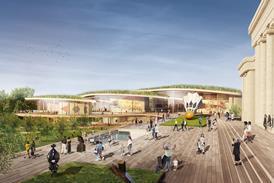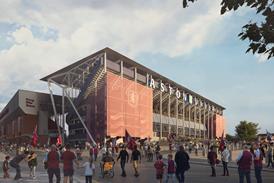An Englishman might think his home is a castle but language suggests we’re happier living less isolated lives, says Eleanor Jolliffe

In ancient Rome the tugurium Romuli sat on the Palatine Hill, a small thatched hut considered by tradition to be the home of Rome’s founder, Romulus. Vitruvius used it to speculate on the origins of architecture, and considered it the essence of home – a group of people warming themselves in the wilderness, talking around a fire. Home, he felt, was not the marbled extravagance of the building, it was something more.
Both the Spanish and Portuguese languages follow Vitruvius’ attitude towards the fireplace idyll, taking their word for home (hogar and lar respectively) from the Latin root “focus”, meaning hearth or fireplace.
The formation of language can often reveal clues to social attitudes. The hearth associations in the word home are not unique to Latin root languages. Follow the etymology of the English word home and you end up in a tangle of Indo-European words: Gothic “haims”, Old Icelandic “heimer” and Old English “ham”, that coalesce around the common meaning of a piece of pastured land, owned and dwelt in by a community. The modern Swedish (hem) and Norwegian/Danish (hjem) words for home also come from this root.
Moving north-east into Slavic languages, the 18th-century Russian word for house, двор, (dvor) was used to refer not only to the building but the people who lived in it, and the land, stables, workshops, farm buildings, and labour that sustained it. Home was an implied web of social and economic ties that relied on the people who maintained it.
Slightly less obviously practical but with a similar spirit, the modern Greek σπίτι (spiti) – again meaning home – finds its roots in ὁσπίτιον (hospítion) – a root that also spawned the word hospitality. It seems that across Europe in the distant past, community rather than glorious isolation was seen as the source of peace and pleasure.
Outside of European languages the pattern continues with the Hindi word घर (ghar) being used interchangeably for both home and family. In Japanese うち (uchi) or 我が家 (wagaya) both mean home, but can also be used to indicate a feeling of belonging or a feeling of family respectively.
In China, the character 家 (jia) can also be used to mean home or family. The character is perhaps surprisingly formed of the two characters for roof (宀) and pig (豕). However, dig a little deeper and you find that in ancient China pigs were often kept indoors as a prized possession and so a roof with a pig under it became associated with a fortunate and bountiful home.
The history behind words has always fascinated me because I think we often use language while being aware of its layers of meaning – etymological roots subconsciously remembered by association, if you will. However, my point is (slightly) more than an enjoyable ramble through etymology. Home is an important universal concept that crosses cultures, continents and traditions with almost no change in association or meaning.
Philosopher Gaston Bachelard would argue that home “is our first universe” and that homes shape people. He believes that the way our bodies feel their way around spaces is learnt from the first space they touch, our first home. I have long seen truth in this view and the responsibility I think this places on my profession is something I am too inclined to forget in the daily routines of presentations, construction details and reports.
Home is at the heart of our sense of self: the words themselves tell us this. Nothing sparks political rhetoric faster than a housing crisis, except perhaps Brexit and that could arguably be seen as a threat to concepts of nationhood – home on a more macro level. Home is emotive. Whether we are designing masterplans or loft extensions every architect in the country is contributing towards a home – and it’s a privilege, something we should be able to delight in.
















1 Readers' comment